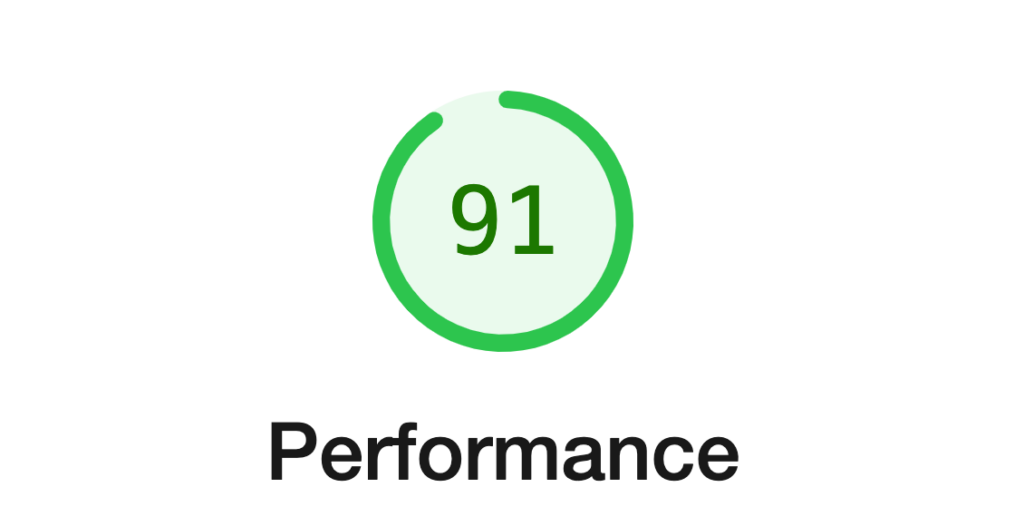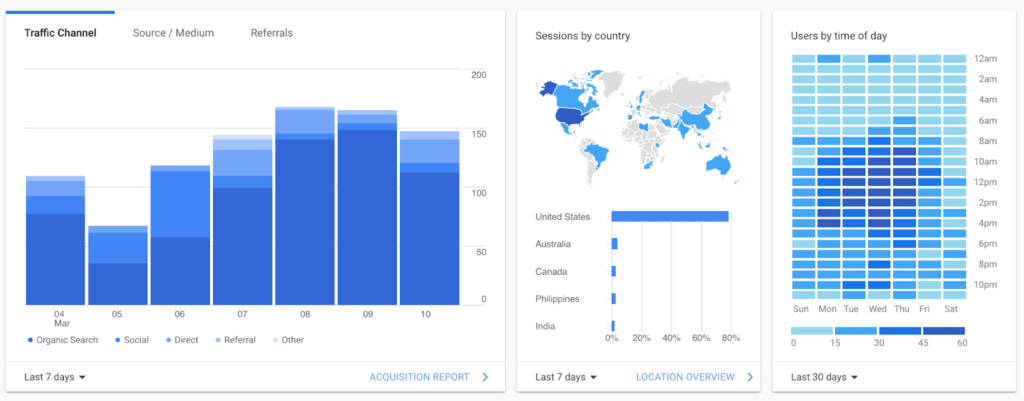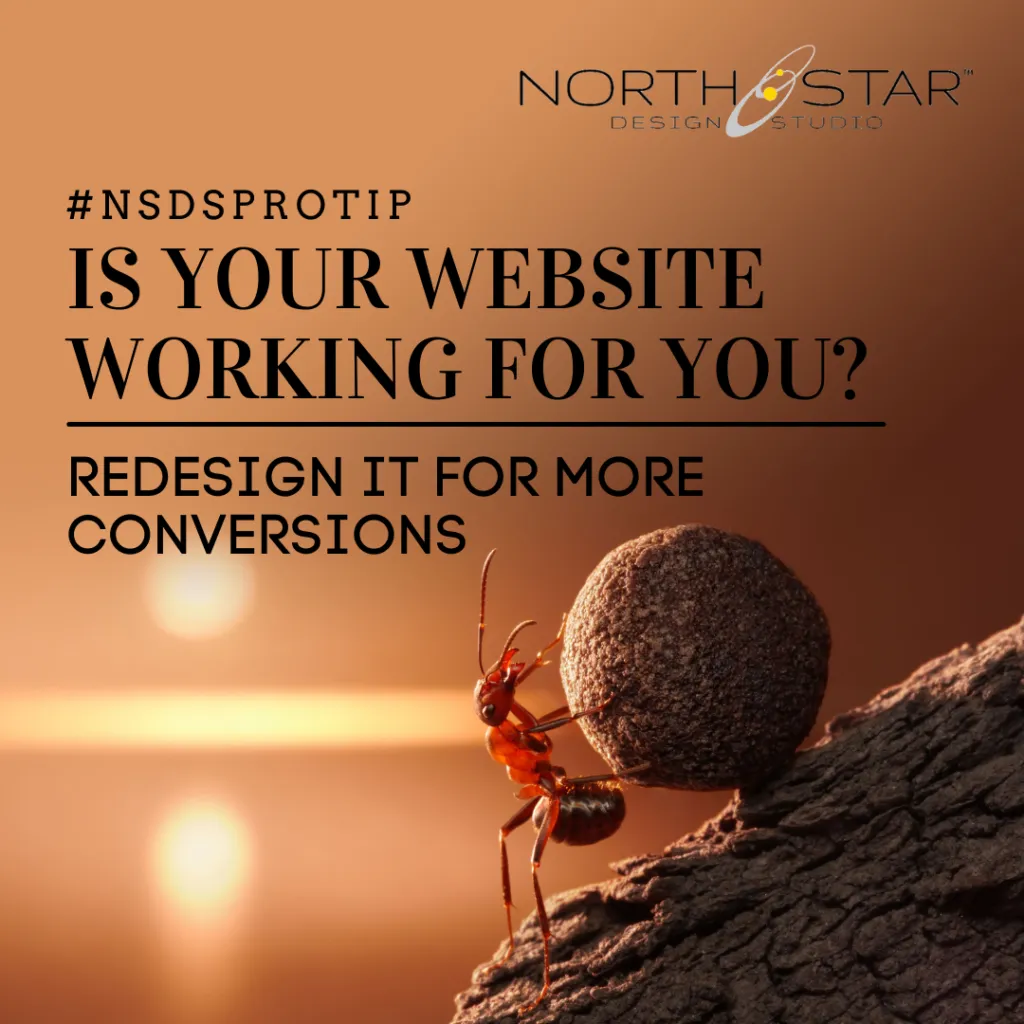Your website is the online face of your business. It should attract customers, sell your products or services, and engage your consumers. If a website is doing all this for your business, it is working for you.

Make your business come live on your website.
Most people understand that you need a website for your business, but not all websites are created equal. There are a lot of websites that have no compelling pitch, emotional appeal, clear calls to action, or interactive elements. Similarly, there are other websites that are not optimized, or updated regularly and look outdated. Such websites fail to attract visitors and convert them.
With market competition continually growing and technology always evolving, there is no such thing as ‘set it and forget it’ – you should always be monitoring and evaluating what is and isn’t working for you and your users. Standards and technologies evolve at a quick pace, so any site more than a few years old is likely outdated one way or another.
One of the most important things for any website is to stay up-to-date with current standards and best practices of web development. Making sure that a site’s performance, as well as its design and usability, stay in lockstep with current trends can be exhausting, but making the effort will pay off in spades if you’re both strategic and diligent.
If you’re not entirely clear on whether or not your website is working for or against you, below are a few tips to keep in mind.
Tips to Make Your Website Work for You
1. Make Your Website Mobile-Friendly

A mobile-friendly website is optimized for use on mobile devices such as smartphones and tablets. This implies that the website’s design has been adjusted to fit smaller screens, ensuring that every element is visible and polished on any mobile device. In a site audit, a site’s usability is often covered within the ‘performance’ score.
It’s likely that if your site is more than a couple of years old and it hasn’t had a major overhaul since it was initially built, it wasn’t designed with mobile-friendliness in mind because the standards weren’t there yet. While techniques and standards are always evolving; the need for mobile optimization is the most significant development in web design in years.
According to In 2021, mobile devices generated 54.8% of global website traffic. Due to this increasing number of mobile users, Google has declared mobile-friendliness as one of the most important ranking signals. Similarly, a Hubspot study proves that decreasing mobile site load time by one-tenth of a second greatly increased conversion rate. Mobile-friendly sites are no longer an option, they are a necessity.
2. Improve the User-Experience
User experience is determined by how content is organized and presented on your website. It is, however, frequently overlooked. User experience is critical today since websites provide a wealth of information and tools to attract their target market.
Plan your website’s sections and categories carefully, and present content in such a way that users can easily discover it. Always consider your users’ points of view. This is especially critical if your company’s website has a lot of material.
Recognize where in the buying process your audience is and cater to that. If they’re problem aware and not solution aware, spend more time educating them. If they’re both problem and solution aware, spend time convincing them why you’re the best provider of that solution.
3. Make Your Website Up-to-Date
Have you ever attempted to complete an online form or follow a link only to be redirected to a 404 (“File Not Found”) page? What if you’re attempting to make an online transaction and the secure connection keeps failing? These types of technical issues can cost firms a lot of money in terms of lost revenue and missed lead generation possibilities.
Similarly, you need to check if your website is optimized for social media. Social media marketing is a way for companies to engage with existing customers, reach new ones and promote the company’s desired culture or tone. One way of optimizing your website for social media marketing is to invest in high-quality, diversified content. From blog posts to fantastic visuals, to infographics, capture the attention of your followers on social media through engaging content. Similarly, make sure that social media icons are prominently displayed on your home page and the individual pages. This makes it easier for your website visitors to share your content on their social media profiles conveniently.
Most websites will need to be checked frequently to ensure that everything is working properly, so make sure to check all of your site’s pages for social media icons, broken links, outdated plugins, form submission issues, and so on.
4. Install Web Analytics on Your Website

Web analytics is necessary to grow your business website. It will provide you with data on website traffic so that you can identify what they are doing on your site. There are many web analytic tools, that a small business owner can use for measuring website traffic, but the most popular and free version is Google Analytics.
Google Analytics allows you to track customers’ behavior, user experience, online content as well as other things like device functionality. This tool helps a business owner shape success strategies by giving them information about visitors on their site that they might not have been aware of otherwise. Using this information, a webmaster can constantly improve their website for more traffic and better conversions.
An amazing companion tool is Google Search Console. For those less versed on the nuance of Google Analytics, GSC provides smaller, bite-size data chunks that give high-level overview of activity on your site.
5. Set-up a System to Collect Lead Information on Your Website
It’s fantastic to have a lot of people visiting your website daily, but it’s even better when you can convert them into leads. Is there a data gathering option on your website, such as an online form, that you may use to collect lead information? If not, you should add it today. At NSDS website, we have a pop-up form that encourages website visitors to sign up for an e-mail list.
Similarly, our website also allows the business owners to audit their website for free and download the report after entering their e-mail.

Make sure that users can quickly find this form and that submitting their information is as simple as possible by only asking for the essentials-name, email address, and phone number (if appropriate).
6. Update Content on Your Website
Posting fresh, interesting content is the key to a successful blog. Avoid acronyms and corporate speak when you write–use language that makes sense to your audience. Explain why you are posting or writing something; visitors have short attention spans so keep it concise and spell correctly!
Blogs are great because they add new content daily which can improve SEO strategy. This not only allows you to rank quickly but also establishes your knowledge and credibility.
Another often overlooked content opportunity is optimizing branded and service-specific FAQs. Read more on how to do that here.
Recommended Reading: Hidden Costs of a Poorly-Designed Website: Why Design and Strategy Matter
7. Optimize your Website for Search Engines

People use search engines like Google to find all sorts of things, from restaurant recommendations to B2B software providers. This means that regardless of what your business offers, there is likely someone searching for a product or service just like yours on one of the major search engines today. And if you want them to come across and engage with your site specifically? You need SEO (search engine optimization).
Good SEO not only means using the right keywords in the right places but also creating great content, building up a strong link profile, and having an optimized user experience. It requires tons of work if it’s going to include success- lots more than many people expect!
SEO benefits your marketing campaign in the following ways:
- SEO brings the right kind of traffic to your website, traffic that has more potential for conversions (ie: turning visitors into customers).
- SEO increases sales and multiplies revenue.
- SEO decreases the marketing cost for a business. Ad campaigns cost a ton of money. SEO decreases the marketing costs while generating revenue for a website.
8. Make your Website Safe
Web security is important to keep hackers from accessing sensitive information. Without proactive security, businesses risk the spread and escalation of malware, attacks on other websites or networks, and other IT infrastructures. If a hacker is successful in their attack, it can be difficult for them to find the origin without more advanced forensic techniques as attacks can easily spread from computer to computer.
Every day, a large number of websites are harmed as a result of obsolete software. These potential hackers and bots keep on scanning the sites to find one that they could target.
Your website’s health and security depend on regular updates. Your site is not secure if the software or applications are out of date. At NSDS, we always recommend our clients choose.
HTTPS, (Hypertext Transfer Protocol Secure) is a protocol used to provide security over the Internet. HTTPS prevents interceptions and interruptions from occurring while the content is in transit.
Similarly, SSL (Secure Sockets Layer) is another necessary site protocol. This transfers visitors’ personal information between the website and your database. SSL encrypts information to prevent it from others reading it while in transit.
We also recommend WordPress clients secure, at minimum, a basic monthly maintenance plan that covers plugin and security updates.
9. Integrate your Website with Other Elements of Digital Marketing
Your website should be integrated with other key elements of your digital marketing strategy. For example, if you’re running a promotion on Facebook, does your website “know” about it?
Do you have clear tie-ins between all of your other marketing arms, such as display ads or social media accounts? It is important to marry your digital marketing strategy with your website. This is the best way to reach more potential customers and convert them.
Typically this level of integration is handled by your marketing service provider vs your web development agency. That being said, if you are employing both services, it’s important that you make introductions between the two agencies so they can collaborate together to support your goals.
Your website can either be your best friend to help market and make sales for you or act against yourself instead. It’s never a waste of time to ensure that we keep our online presence properly representing us so use the ideas listed above to ensure that our websites are working for us rather than against ourselves!
Conclusion
The success of a website is determined by its usability. Usability boosts your chances of success by allowing visitors to have a seamless experience. It’s one of the things that distinguishes a well-designed website from the others. The 11 usability qualities listed above must be present on any website. It can aid in the success of your website.
When did you last freshen up your site? What do you plan to update next? Take our Free SEU Audit tool for a spin to have a look under your hood. Or, if you’re ready to dig a little deeper, schedule your free consultation with us here.





